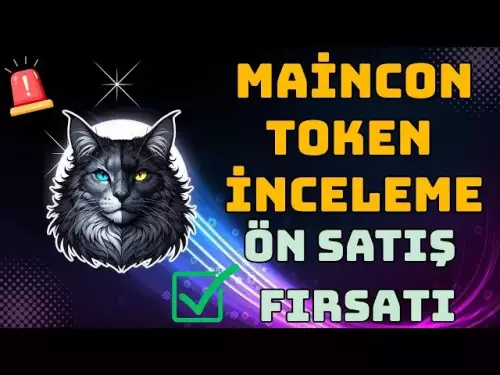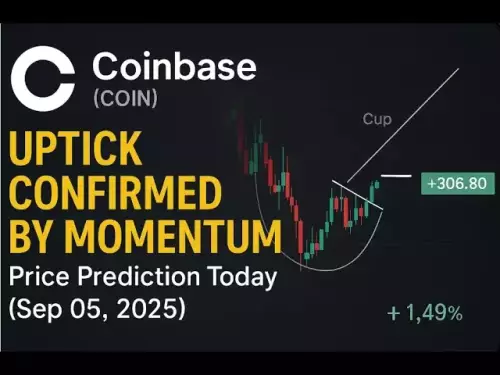-
 Bitcoin
Bitcoin $110700
-0.02% -
 Ethereum
Ethereum $4317
0.30% -
 Tether USDt
Tether USDt $0.0000
-0.01% -
 XRP
XRP $2.820
0.85% -
 BNB
BNB $850.1
0.65% -
 Solana
Solana $204.1
0.76% -
 USDC
USDC $0.9998
0.00% -
 Dogecoin
Dogecoin $0.2185
2.41% -
 TRON
TRON $0.3311
-1.13% -
 Cardano
Cardano $0.8337
2.94% -
 Hyperliquid
Hyperliquid $47.46
4.47% -
 Chainlink
Chainlink $22.38
0.19% -
 Ethena USDe
Ethena USDe $1.001
-0.02% -
 Bitcoin Cash
Bitcoin Cash $608.7
3.65% -
 Sui
Sui $3.388
2.77% -
 Stellar
Stellar $0.3605
2.07% -
 Avalanche
Avalanche $24.49
1.56% -
 Hedera
Hedera $0.2191
2.15% -
 Cronos
Cronos $0.2699
1.45% -
 UNUS SED LEO
UNUS SED LEO $9.539
-0.14% -
 Litecoin
Litecoin $112.2
0.59% -
 Toncoin
Toncoin $3.090
-0.33% -
 Shiba Inu
Shiba Inu $0.00001243
2.30% -
 Polkadot
Polkadot $3.837
1.66% -
 Uniswap
Uniswap $9.408
0.81% -
 Dai
Dai $0.9996
-0.05% -
 Ethena
Ethena $0.7383
13.07% -
 Monero
Monero $268.4
-0.63% -
 Aave
Aave $303.0
-1.26% -
 World Liberty Financial
World Liberty Financial $0.1822
-1.10%
Why did my MetaMask transaction fail?
MetaMask transactions can fail due to low gas, network congestion, smart contract errors, nonce conflicts, or connectivity issues—always check the transaction hash and error message to diagnose.
Sep 05, 2025 at 11:18 pm
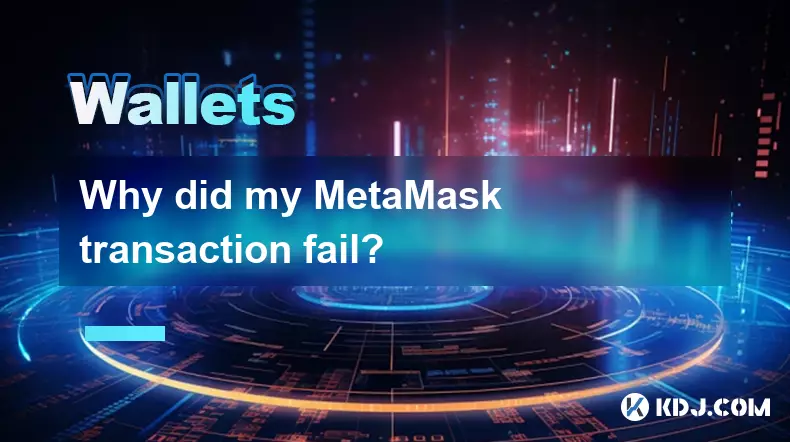
Common Reasons for MetaMask Transaction Failures
1. Insufficient gas fees can lead to transaction rejection. Ethereum and other EVM-compatible networks require users to pay for computational resources. If the gas limit is set too low, the network may not process the transaction, resulting in a failure marked as 'out of gas.'
2. Network congestion often impacts transaction success. During peak usage times, blocks become full, and transactions with lower gas prices may remain pending indefinitely or get dropped by nodes. This is especially common on Ethereum during NFT mint events or major market movements.
3. Smart contract errors can trigger transaction failures. If a transaction interacts with a contract that reverts due to incorrect inputs, insufficient balance, or logic checks, the blockchain will reject it. These reverts often display messages like 'execution reverted' in MetaMask.
4. Nonce conflicts occur when multiple transactions are sent rapidly. Each transaction must have a unique nonce in sequential order. If you send two transactions simultaneously, the second one may fail because the nonce is no longer valid after the first confirms.
5. Wallet connectivity issues may prevent proper broadcasting. If MetaMask is not synced with the correct network or experiences RPC errors, the transaction might not reach the blockchain at all, appearing as failed or stuck.
How to Diagnose a Failed Transaction
1. Check the transaction hash on a blockchain explorer like Etherscan. This provides detailed status information, including whether it was reverted, out of gas, or replaced by another transaction.
2. Review the error message in MetaMask. It often specifies the cause, such as 'user rejected the transaction,' 'transaction failed,' or 'internal JSON-RPC error.' Each indicates a different root issue.
3. Verify the gas settings used. Compare your gas price and limit to current network recommendations. Tools like GasNow or the ETH Gas Station can help determine appropriate values.
4. Look for contract interaction details. If the transaction involved a token swap, NFT mint, or staking, confirm the contract address is legitimate and the function parameters were correct.
5. Monitor your wallet’s nonce. In MetaMask settings, enable 'Advanced' to view the current nonce. If transactions are out of order, manually adjust the nonce to resend a stuck transaction.
Solutions to Recover or Prevent Future Failures
1. Speed up or cancel pending transactions. In MetaMask, use the 'Speed Up' option to replace a pending transaction with a higher gas fee. Alternatively, 'Cancel' sends a zero-value transaction with the same nonce and higher gas to override it.
2. Adjust gas manually before confirming. Instead of relying on MetaMask’s automatic estimation, set a custom gas price and limit based on real-time network data to increase confirmation chances.
3. Use ETH or native tokens to cover gas costs. Holding only ERC-20 tokens without ETH in your wallet will prevent transaction execution, as gas must be paid in the network’s native currency.
4. Re-attempt contract interactions with updated parameters. If a DeFi transaction failed due to slippage or price impact, adjust the slippage tolerance in the dApp settings before retrying.
5. Switch to a more stable RPC provider. In MetaMask network settings, change the RPC URL to a reliable node service like Alchemy, Infura, or Chainstack to reduce connectivity errors.
Frequently Asked Questions
Q: Can I get my gas fee back if a transaction fails?A: No. Even if a transaction fails due to a contract revert, the gas used for computation is consumed and non-refundable. This is a fundamental aspect of how Ethereum’s fee model works.
Q: Why does my transaction show as 'Failed' but still deduct tokens?A: Some dApps transfer tokens as part of a contract call before execution. If the contract later reverts, the blockchain state rolls back, but external token transfers may already have been processed depending on the contract logic.
Q: How do I avoid failed transactions when using DeFi platforms?A: Always ensure you have enough native token for gas, review transaction details in the contract interaction window, and use conservative slippage settings. Confirm the dApp’s legitimacy and check community channels for known issues.
Q: What does 'internal JSON-RPC error' mean in MetaMask?A: This typically indicates a problem between MetaMask and the node it's connected to. It could stem from network instability, an incorrect RPC configuration, or temporary server outages on the node provider’s end.
Disclaimer:info@kdj.com
The information provided is not trading advice. kdj.com does not assume any responsibility for any investments made based on the information provided in this article. Cryptocurrencies are highly volatile and it is highly recommended that you invest with caution after thorough research!
If you believe that the content used on this website infringes your copyright, please contact us immediately (info@kdj.com) and we will delete it promptly.
- BullZilla ($BZIL): Riding the Meme Coin Wave with Presale Price Potential
- 2025-09-06 06:45:14
- Bitcoin Whale Awakens: $10 Billion Ethereum Shift?
- 2025-09-06 06:25:11
- Cardano, Pi Network, and Presale Altcoins: What's the Buzz?
- 2025-09-06 04:45:15
- Bitcoin Hashrate, Price, and ATH: Navigating the Crypto Landscape
- 2025-09-06 04:30:12
- Tokens to Watch: Market Cap Projections for 2026
- 2025-09-06 05:05:13
- XRP, Trading Volume, and PayFi Altcoins: What's the Haps?
- 2025-09-06 04:50:12
Related knowledge
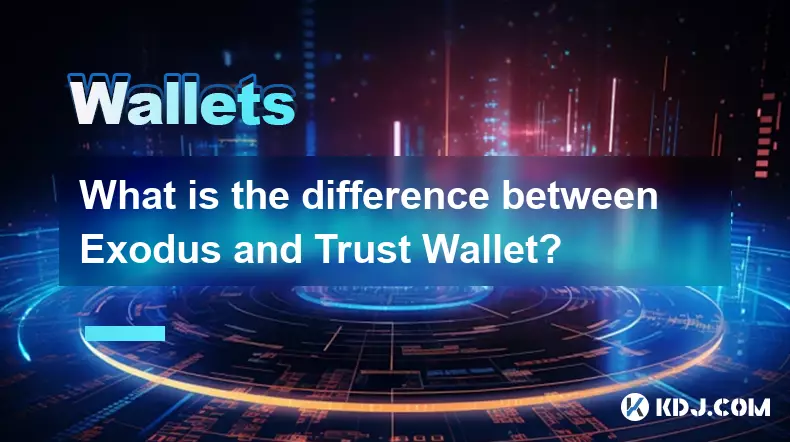
What is the difference between Exodus and Trust Wallet?
Sep 05,2025 at 05:36pm
Differences in Wallet Architecture and Design Philosophy1. Exodus operates as a multi-asset desktop and mobile wallet with an emphasis on user experie...
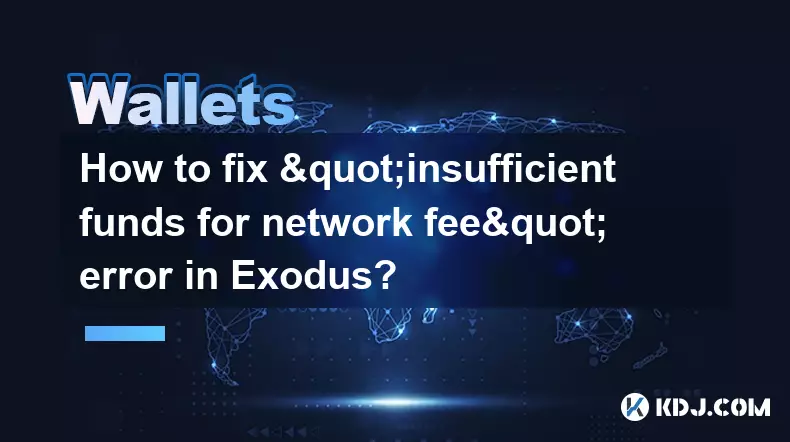
How to fix "insufficient funds for network fee" error in Exodus?
Sep 06,2025 at 01:18am
Understanding the 'Insufficient Funds for Network Fee' Error1. The 'insufficient funds for network fee' error in Exodus occurs when your wallet does n...
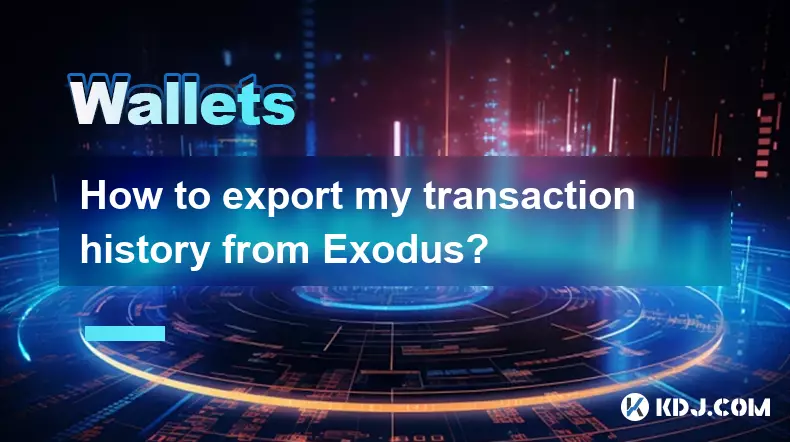
How to export my transaction history from Exodus?
Sep 06,2025 at 04:19am
Exporting Transaction History from Exodus WalletExodus is a popular cryptocurrency wallet known for its user-friendly interface and support for multip...
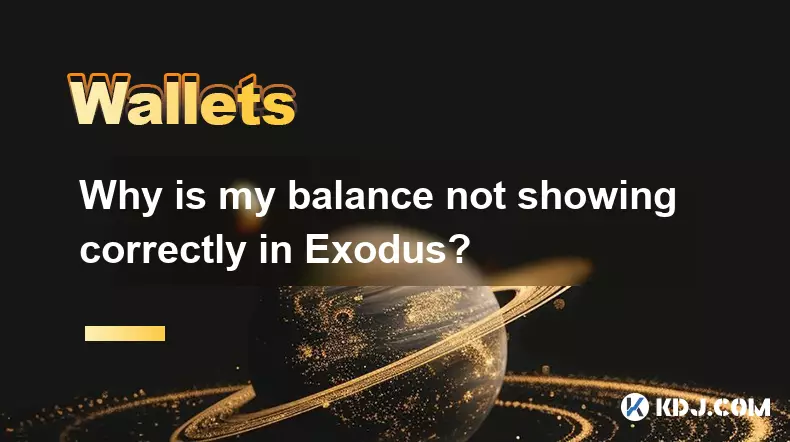
Why is my balance not showing correctly in Exodus?
Sep 05,2025 at 08:00am
Understanding Wallet Synchronization Issues in Exodus1. Wallet synchronization problems are among the most common reasons users see incorrect balances...
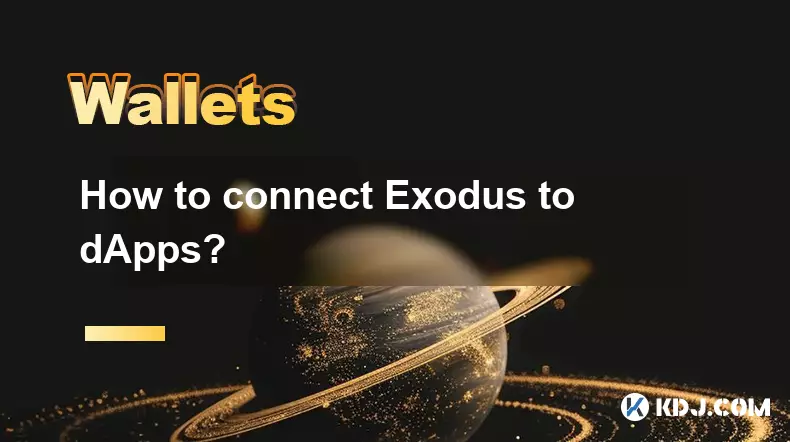
How to connect Exodus to dApps?
Sep 05,2025 at 11:00pm
Understanding Exodus Wallet Integration with dApps1. Exodus is a non-custodial cryptocurrency wallet that supports multiple blockchains including Ethe...

How to view NFTs in Exodus?
Sep 05,2025 at 02:00pm
Understanding NFTs in Exodus Wallet1. Exodus is a non-custodial digital wallet that supports a wide range of cryptocurrencies and NFTs. It provides us...

What is the difference between Exodus and Trust Wallet?
Sep 05,2025 at 05:36pm
Differences in Wallet Architecture and Design Philosophy1. Exodus operates as a multi-asset desktop and mobile wallet with an emphasis on user experie...

How to fix "insufficient funds for network fee" error in Exodus?
Sep 06,2025 at 01:18am
Understanding the 'Insufficient Funds for Network Fee' Error1. The 'insufficient funds for network fee' error in Exodus occurs when your wallet does n...

How to export my transaction history from Exodus?
Sep 06,2025 at 04:19am
Exporting Transaction History from Exodus WalletExodus is a popular cryptocurrency wallet known for its user-friendly interface and support for multip...

Why is my balance not showing correctly in Exodus?
Sep 05,2025 at 08:00am
Understanding Wallet Synchronization Issues in Exodus1. Wallet synchronization problems are among the most common reasons users see incorrect balances...

How to connect Exodus to dApps?
Sep 05,2025 at 11:00pm
Understanding Exodus Wallet Integration with dApps1. Exodus is a non-custodial cryptocurrency wallet that supports multiple blockchains including Ethe...

How to view NFTs in Exodus?
Sep 05,2025 at 02:00pm
Understanding NFTs in Exodus Wallet1. Exodus is a non-custodial digital wallet that supports a wide range of cryptocurrencies and NFTs. It provides us...
See all articles





















